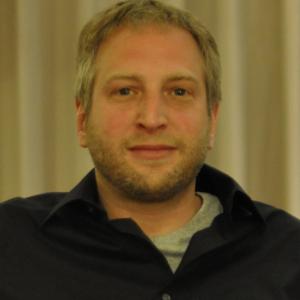
Professor
-
whatshotResearch Description
The broad goal of the research in our laboratory is to understand the genetic, cellular, and hormonal mechanisms responsible for the temporal control of motivated behaviors and their underlying physiology. We are particularly interested in the mechanisms by which the circadian system coordinates myriad neural and peripheral processes to maintain homeostasis and promote optimal psychological and physiological functioning. Circadian rhythms in mammals are endogenously generated by a brain clock located in the suprachiasmatic nucleus (SCN) of the anterior hypothalamus. These behavioral and physiological rhythms persist in the absence of environmental time cues with exquisite precision. For this line of research, we are interested in two general research questions: 1) What are the molecular and cellular mechanisms by which circadian rhythms are generated by the mammalian brain clock? 2) How does the SCN communicate timing information to the rest of the brain and body? These lines of research examine the circadian control of endocrine function as a model system. The endocrine system provides an ideal opportunity to investigate the mechanisms and pathways by which the SCN exerts control over peripheral physiology and behavior. The cells in the brain that regulate endocrine function have been well characterized and there are abundant data available on the mechanisms by which the neuroendocrine axis is controlled hierarchically. Combined, these pieces of information allow for discovering general principles of circadian regulation of behavioral and physiological functioning using a tractable system.
Our laboratory is also interested in investigations of timing on a yearly schedule. In order to cope with the energetic challenges of winter, species inhabiting nontropical and boreal latitudes inhibit reproduction and other energetically costly processes. Inhibition of reproduction occurs in anticipation of winter in response to decreasing day lengths. Day length information is transmitted by the retina, interpreted by the SCN, and communicated to the pineal gland. The duration of pineal melatonin secretion codes day length and drives seasonal changes in reproduction. However, the neural pathways on which melatonin acts to inhibit reproduction remain elusive. Theoretically, melatonin should communicate either directly or indirectly to the gonadotropin-releasing hormone (GnRH) neuronal system to regulate seasonal changes in reproduction. Our lab is currently investigating the role of a novel inhibitory RFamide peptide whose neurons project to the GnRH system and are in a key position to modulate seasonal changes in reproduction.
Graduate students will typically work on the above subject matter but are encouraged to develop their own individual lines of investigation that fit within the general goals of the laboratory. Active collaborations within the psychology department and with other laboratories in the neurosciences are encouraged.
-
placeSelected Publications
Kriegsfeld, L.J., Silver, R., Gore, A.C., & Crews, D (2002). Vasoactive intestinal polypepitide contacts on gonadotropin-releasing hormone neurons increase in developing female rats. Journal of Neuroendocrinology, 14:685-690.
Kriegsfeld, L.J., LeSauter, J., Hamada, T., Pitts, S.M., and Silver, R (2002). Circadian rhythms in the endocrine system. In: Hormones, Brain and Behavior. D. Pfaff and A. Etgen, (eds.). Academic Press, NY, pp. 33-91.
Kriegsfeld, L.J., Korets, R., & Silver, R. (2003). Expression of the clock gene Period 1 in neuroendocrine cells: An Investigation Using Mice with a Per1::GFP Transgene. European Journal of Neuroscience, 17:1-9.
Kriegsfeld, L.J., Hotchkiss, A., Demas, G.E., Silver, R., Silverman, A-J., & Nelson, R.J. (2003). Brain mast cells are influenced by chemosensory stimuli involved in estrus induction in female prairie voles (Microtus ochrogaster). Hormones and Behavior, 44:377-184.
Kriegsfeld, L.J., Leak, R. LeSauter, J., Yackulic, C., & Silver, R. (2004). Organization of suprachiasmatic nucleus projections in Syrian hamsters (Mesocricetus auratus): an anterograde and retrograde analysis. Journal of Comparative Neurology, 468:361-379.
Kriegsfeld, L.J., LeSauter, J., & Silver, R. (2004). Targeted microlesions reveal novel organization of the hamster suprachiasmatic nucleus. Journal of Neuroscience, 24:2449-2457.
-
filter_dramaTeaching
